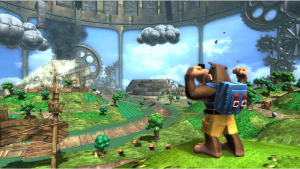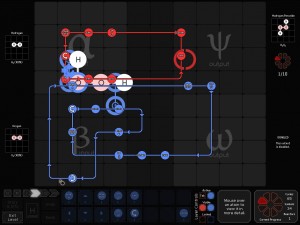“Emergent Gameplay” has become a popular buzz word and Holy Grail concept for game designers. In the past, we’ve talked about what it is and the challenge of creating it. For today, we’re going to do one better — We’re going to try and define the conditions that can lead to emergent gameplay.
Emerging Gameplay:
Emergent Gameplay is the concept of creating a game that allows the player to create solutions or elements that the designer never intended. On the low end of the scale, we can talk about expert min/maxing and breaking games. On the high end, it’s the idea of literally creating new forms of gameplay within the game space.
In our last talk about emergent gameplay, I brought up why just because your game is open-ended doesn’t mean its emergent. Giving the player a lot of options is not the same as giving them the ability to explore said options. Likewise, a game with modding support is not an example of emergent game design.
In order for a game to feature emergent gameplay, what’s been created by the designer must have enough adaptability to be transformed by the player. With that said, we can start narrowing down the factors that can lead to emergent game design.
Widely Defined:
Every video game has mechanics and game systems that add up to the gameplay of a title. The foundation of emergent gameplay starts with the purpose and definition of the game systems.
Many game mechanics are designed around a set purpose —
- Jumping — Allows the player to leap over obstacles and progress over gaps
- Punch — Attack an opposing character to stop them from hurting you
We can also go into detail about more specific mechanics —
- Fire Magic — Lets the player throw a fireball at enemies
- Iron Skin — Player character becomes cover in iron; increasing physical defensive value
With the examples mentioned, they all are designed around a rigid situation and utility. When we talked about Metroidvania design, I brought up the concept of “keys,” or when an upgrade only has one purpose separate from everything else.
For emergent gameplay to exist, options must be defined, but also offer degrees of utility. With the last two points, we can change them around like so:
- Fire Magic — Let’s the player create fire that burns akin to a wildfire
- Iron Skin — Player’s skin becomes covered in iron; increasing mass and durability
Now those two abilities could be used in a variety of situations, or even combined with each other. Imagine playing a game where you could use a fire spell to weaken a wall of a cottage enough to then bust through it with your iron form.
Another way to ground your thinking is that everything in the world has properties that either affect other elements or are impacted by them. The game Banjo Kazooie Nuts and Bolts grounded everything along those lines.
Put wings or helicopter blades on any kind of vehicle and it gets the property to fly. The next point is when we begin to define the gamespace itself.
Set Goals:
One of the biggest points of contention when it comes to describing emergent gameplay is with open-ended games. Many people feel that every open-ended game is an example of emergent gameplay. The problem with that thinking is that it comes down to what’s going on in the game.
Just being able to interact with the world is not enough to create emergent gameplay. There has to be set goals, either provided by the game or defined by the player. As the saying goes, “Necessity is the mother of invention,” and we can talk an example that follow that thinking.
In the game Factorio, the player is given a huge number of tools and machinery to use to build their colony. While the game has an overarching goal of escaping the planet, the player sets goals for how they want to build their colony. Is it difficult to get resources moved? Then construct a mine cart system and try to automate.
The game never comes out and tells the player to do X, Y, or Z, but instead leaves it to them to start putting things together. Another important point is that any goals cannot force the player to do something. The goal must be open to interpretation by the player and the mechanics.
While a beginning and end are important, there’s a reason why we saved the middle for last.
Open-Ended Middle:
Possibly the hardest area to create emergent gameplay, there must always be multiple options for the player to achieve their goal. It doesn’t matter how unique your mechanics are if there is only one way to play the game.
One of the best examples of this would be from the puzzle games by Zachtronics. Each one of his games allow for multiple solutions to the same set goal with the given options and mechanics.
Having goals that can be achieved through multiple solutions can be tough. Another key point about emergent gameplay is that there are many cases where the designer didn’t even know it was possible to do something.
There is a greater talk on the philosophy of open-ended structure in video games, but that can easily fill another post.
Emergent Ending:
Emergent Gameplay is a master class form of game design that many developers claim they have, but only a handful are out there.
This is something that you’re not going to stumble upon while building your game, as the building blocks need to be there from the beginning. Even if your entire game is not build around emergent gameplay, depending on the utility of the mechanics, you may still have some elements there.
If the conditions are right, you can have a standout game that no one else will have. For you reading this: Can you think of great examples of games built entirely around emergent gameplay, or even games with just systems that could produce it?




